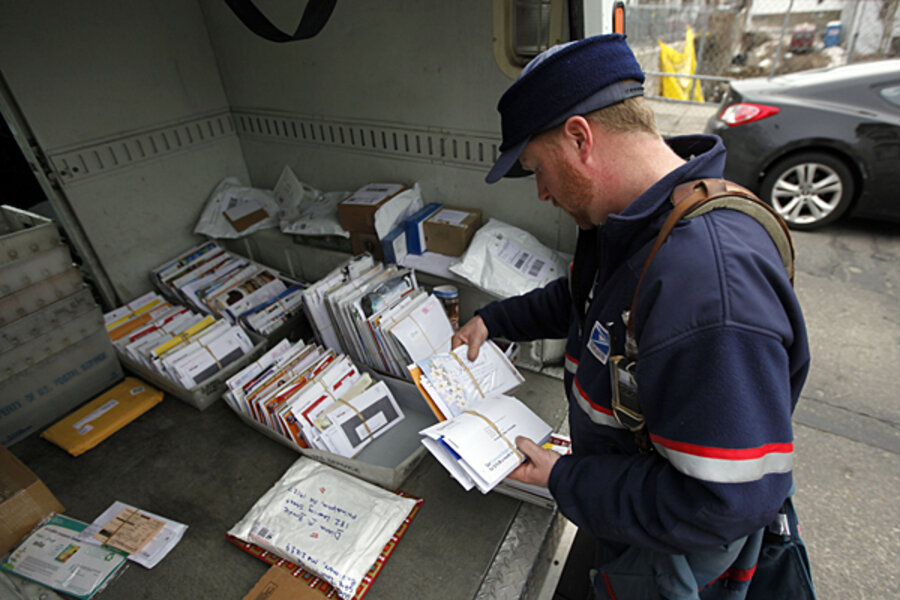USPS ends Saturday letter delivery. How much fuel will it save?
Loading...
The post office will no longer deliver letters on Saturdays. The move comes as the United States Postal Service struggles with shrinking mail volume and rising operating costs.
So how much money can it expect to save by scrapping Saturday delivery? Overall, the Postal Service expects to save $2 billion a year out of an annual operating budget of more than $70 billion. A big part of that saving presumably is labor costs. Another savings is fuel.
The Postal Service owns and operates the world's largest civilian vehicle fleet with more than 213,000 cars, trucks, and vans that travel 1.2 billion miles each year. In fiscal year 2010, USPS vehicles consumed about 146 million gasoline gallon equivalents (GGE), or about 700 GGE if you include contract vehicles. The cost of fueling and maintaining USPS vehicles runs about $1 billion a year.
And those costs have been rising, despite USPS efforts to curb them.
"Most Americans can modify their driving habits when gasoline prices rise – change commuting modes, combine multiple errands into one trip and cut out non-essential driving," reads the USPS 2011 sustainability plan. "Not as easy to do for the Postal Service. We deliver six days per week, regardless of the price at the pump."
The Postal Service has tried to trim the financial and environmental drag of its fleet. It has experimented with the use of electric vehicles on and off since 1899, and now counts about 44,000 electric, compressed natural gas, liquid propane gas, and biodiesel vehicles among its fleet. That makes it the world's largest alternative fuel-enabled fleet of vehicles, according to the USPS.
Despite these efforts, postal vehicle petroleum fuel use increased by 8.3 percent or 11.7 million GGE, between fiscal year 2005 and fiscal year 2011. That's because the fleet must cover more ground each year as the United States continues to grow. The network expanded by 636,530 new delivery points in 2011.
While it has made significant progress on several energy-efficiency fronts, a January 2012 White House Office of Management and Budget report shows that the Postal Service is not on track to achieve a 20 percent reduction in petroleum use by fiscal year 2015 against 2005 levels.
That's why the end of Saturday letter delivery, scheduled for early August, is a start in cutting fuel consumption, but will hardly bring the budget back into balance. If the USPS had completely eliminated Saturday delivery, it could reduce its annual petroleum fuel use by 20 to 25 million GGE (about 3 percent of its total fuel use) and reduce its carbon footprint by about 315,000 to 500,000 metric tons of greenhouse gas equivalent per year, according to the USPS's 2011 sustainability plan.
As it is, the Postal Service will continue to deliver packages on Saturdays, so the savings will be less.
"In the discussions a few years ago, fuel cost savings were a part of the package, but that was eliminating Saturday delivery completely," Sue Brennan, a USPS spokeswoman, wrote in an e-mail. "We are not doing that now, so I’m not sure how much a role [fuel] plays."





